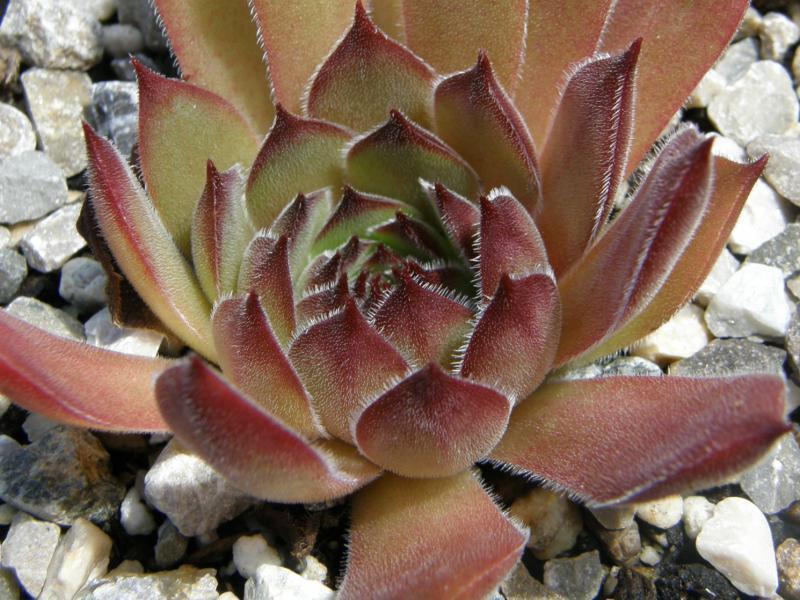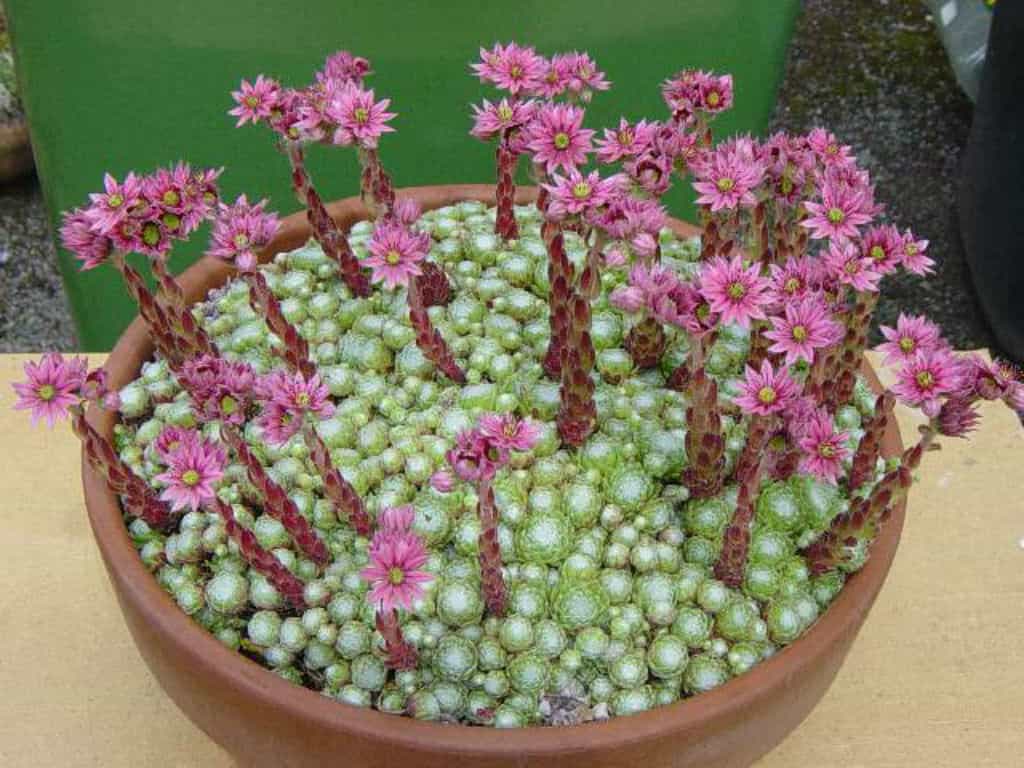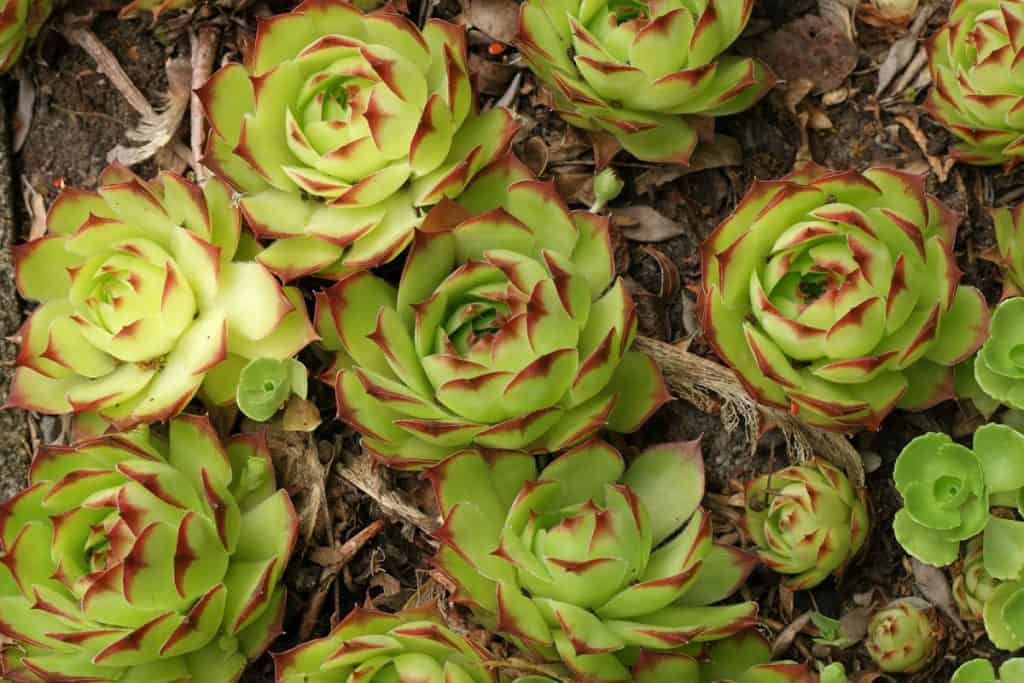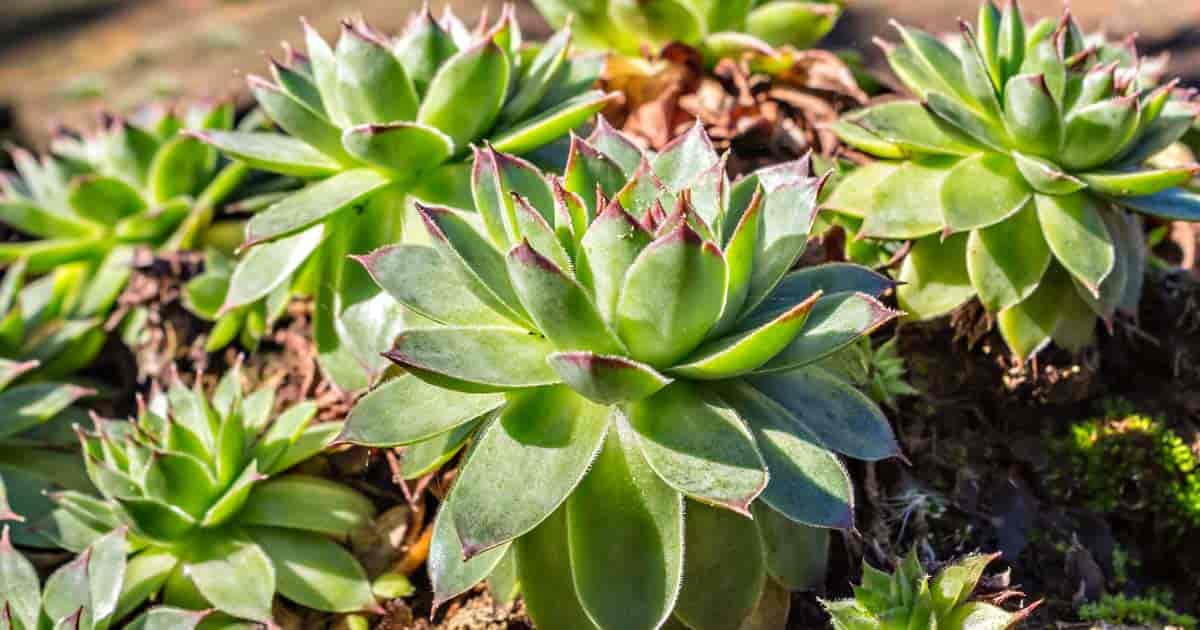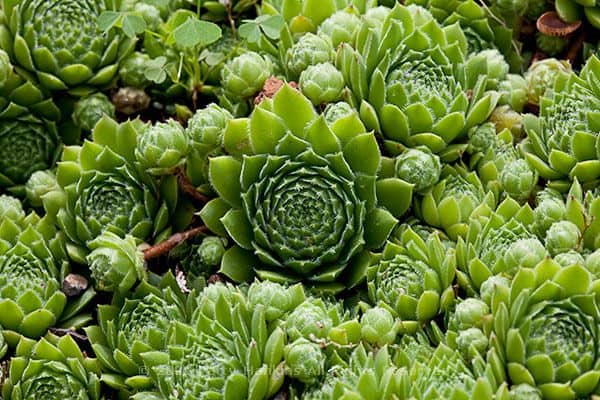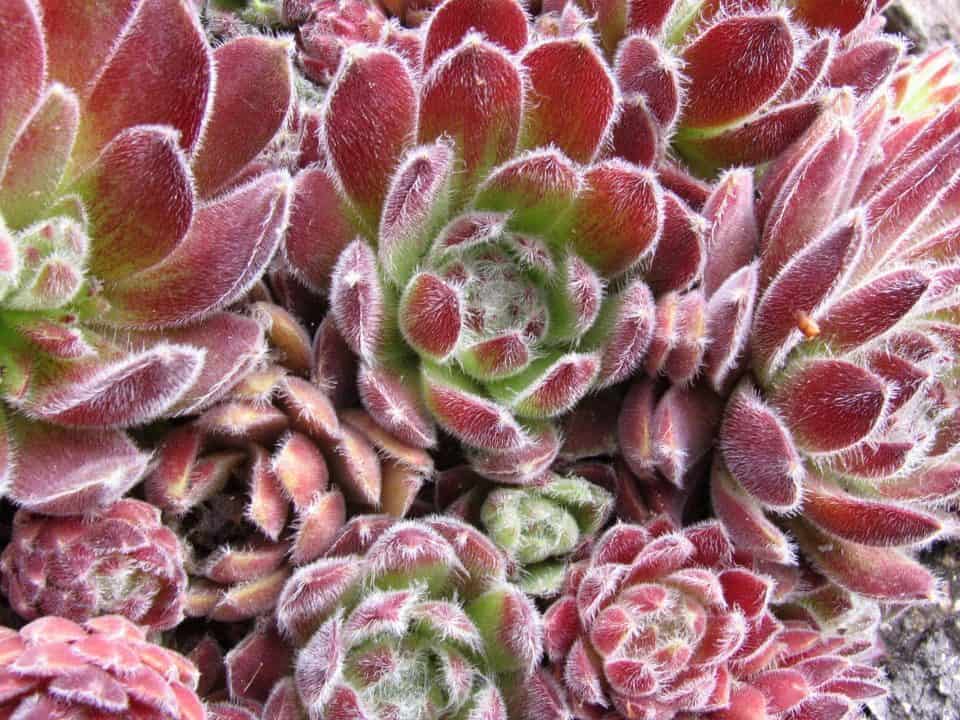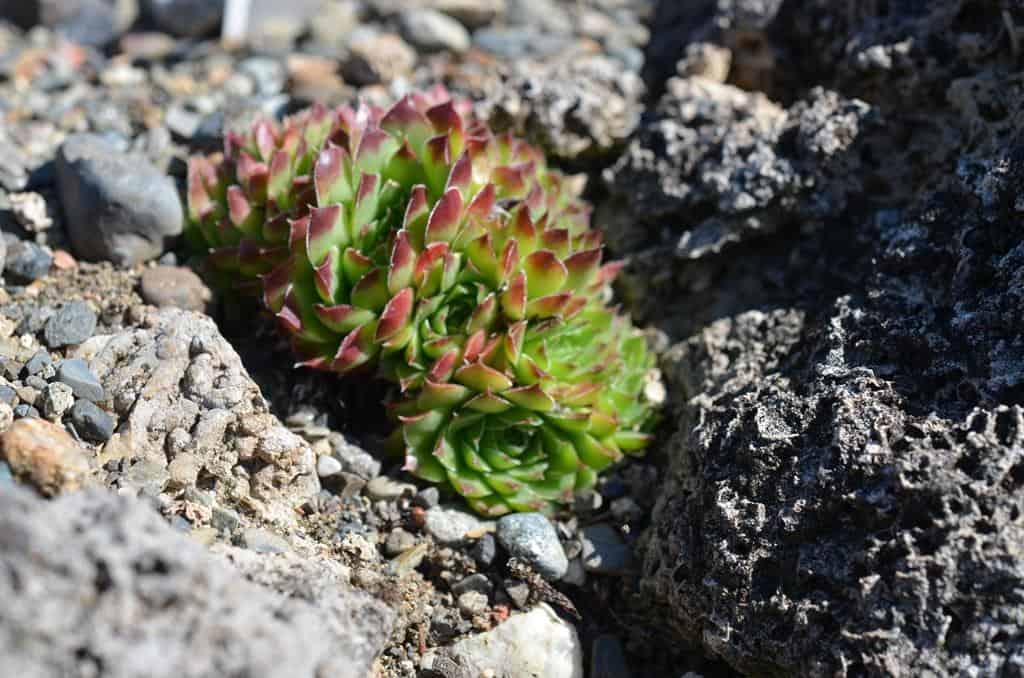First introduced into the United States in 1826, Sempervivum brock has become one of the most popular succulents among gardeners and horticulturists alike because of its abundance of color and easy care. While the Sempervivum variety can be grown both indoors and outdoors, this succulent requires special care to ensure its survival over multiple growing seasons.
It is an extremely popular succulent plant among gardeners, Sempervivum brock is also commonly referred to as Hens and Chicks or Hen and Chickens due to its unique growth pattern. When planted in the right conditions, sempervivum brock can be an invaluable addition to any home or garden, adding both color and texture to the landscaping.
Follow these tips on how to grow Sempervivum brock to cultivate this succulent into a thriving addition to your garden or home décor setup.
Origin and distribution
Sempervivum is a genus of about 500 species of succulent plants in the family Crassulaceae, native to cool temperate and alpine regions of Europe, Asia, and North America. Many sempervivums are popularly known as hens and chicks or ‘live forever’. Some gardeners call them hens and chicks or living stones. A few species are used in rock gardens.
The name sempervivum means ‘always alive’ in Latin. The common name hens-and-chicks refers to one of its most obvious characteristics: new rosettes that form at the base of mature clumps take on a shape similar to chicks huddling under their mother hen’s wings for warmth.
In addition to being evergreen, they are among the hardiest of all succulents; even hard freezes do not kill them. However, severe cold can damage their leaves (as can hail), which will turn brown and fall off if temperatures stay below freezing for extended periods.
Sempervivum brock propagation
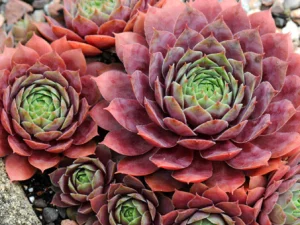
Sempervivum brock, or hen and chicks plants, is a type of succulent plant that is easily propagated. They don’t need much more than a little soil to start growing again. It is said that these plants can live indefinitely, just moving from pot to pot as they grow larger over time. To propagate Sempervivum, it is best to separate them from each other by using a sharp knife or scissors.
Once you have separated them, wash off any dirt or debris on their roots and then place them in some damp soil. Be sure to keep your new plants in an area with plenty of sunlight so they can grow quickly. You will notice that your Sempervivum will begin to grow leaves within two weeks, and sometimes even sooner!
You can also take cuttings from your existing plants if you want to make multiple new ones at once. Just take a cutting about 3 inches long and remove all but one leaf at its base. Plant it in some moist soil, water well, and wait for the growth!
Sempervivum brock care information
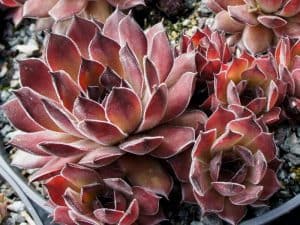
Sempervivum brock is a perennial succulent (or live-forever) native to Europe and parts of Asia. These plants require very little care or maintenance, perfect for novice gardeners or those looking to create a low-maintenance, drought-tolerant landscape bed. They are extremely easy to propagate, which makes them ideal candidates for both home gardens and commercial landscapes.
These Hens and Chicks succulent (Latin for always alive) is one of my favorite types of succulents. They are very easy to grow and propagate, a perfect starter plant for newbie gardeners.
There are many different species of Sempervivum, but most have similar care requirements. They can tolerate part shade to full sun exposure and do well in a wide range of temperatures. Water as needed to keep them from drying out completely.
Light requirement
Sempervivum brock needs bright indirect light or sunny conditions to thrive but can do okay in very low light. While not at all finicky about the way you position it, you’ll get the best out of it by giving it an east- or west-facing window or sunny spot. If their leaves appear thinner than usual and they start to droop, they’re thirsty, so water them well.
Soil/potting mix
Place in a loose, well-draining soil or cactus potting mix. Some gardeners use an equal amount of sand or perlite to add drainage. This succulent doesn’t like being root-bound, so repot it yearly in springtime or when you see new growth emerging from its rosette.
Sempervivums grow well in a potting mix consisting of equal parts fine-grade fir bark, sphagnum peat moss, and perlite. Use roughly equal amounts of each component.
Watering
Sempervivum brock is a drought-tolerant succulent and does not need frequent watering. Too much water causes rot. Let plants dry out between waterings, and don’t let pots sit in standing water. The general rule of thumb is to wait until new growth begins in spring, then resume regular watering and fertilizing schedules.
If you live in an area with hard water, be sure to flush your sempervivum with clear water every two weeks or so to prevent buildup on leaves. If you see signs of fungal disease or pests, it may be time for a repotting.
Fertilizer
Like most succulents, Sempervivum brock does not need excess fertilizer. We recommend using a dilute solution of water-soluble houseplant fertilizer once per month in spring and summer, more often in pots than in garden beds.
If you’re fertilizing in pots, mix three-fourths of parts water to one part of plant food for indoor plants and one part of plant food to two parts of water for outdoor containers or garden beds.
Temperature
Hens and Chicks like sempervivum brock prefer temperatures between 55-75 degrees. They can survive outside during our milder winters. If kept indoors, it is best to keep them on a bright windowsill or grow lights will be needed for sufficient light for optimal health.
Humidity
Sempervivum brock is a succulent that can tolerate a wide range of humidity conditions. They are plants with thin, water-storing stems and leaves, making them well-suited to dry conditions but also able to adapt to wetter environments.
When watering succulents, be careful not to overwater; let their soil dry between waterings. At least once a month (but more often during their growing season), examine their roots for signs of rot or fungus.
The ideal humidity range is between 50 and 70 percent. If you’re growing Sempervivum brock in a container, use a humidifier to increase moisture in your home. Or, place your plants on a tray of wet pebbles; as they evaporate, they will release moisture into the air around them. You can also mist your plants with water from a spray bottle. Be sure to keep your plants away from drafts and vents, which can dry out their leaves quickly.
Pruning
It’s important to prune Sempervivum brock after they’ve finished blooming. Pruning will help your plant remain healthy, but also it will prevent it from growing too large for its location. This can be a tedious task, so consider using a pair of gardening shears instead of scissors, which can damage and bruise your plants. Also, remember to look for any dead leaves or stems that may need to be removed as well.
When to repot
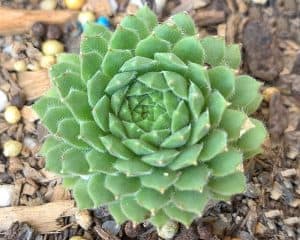
Sempervivum Brock should be repotted during late summer when it has just finished blooming. During repotting, remove old leaves and dead roots to promote healthy new growth. Always use a standard potting mix for succulents because they like well-drained soil. Sempervivum will die if water remains stagnant in their pots.
Dormancy
These succulents go dormant during winter and need to be kept in a cool, dark place for about three months. They can be placed outside for late summer or early fall until frost hits, then it’s back indoors again. If you don’t have a location where they can hang out during dormancy, it is highly recommended that you leave them in their pots and store them in an unheated garage or shed.
Sempervivum brock flower & fragrance
Sempervivum brock, or Hens and Chicks, is an ornamental succulent that grows from a rosette of leaves (hence its name). It spreads quickly via offsets and produces an abundance of small yellow flowers in the summer.
Growth rate
Sempervivum brock is slow growing but will eventually fill a shallow container. To keep your plants looking tidy and full, prune them to shape from time to time. Take a bit off each plant, leaving a small stub.
In ideal conditions, new plants should form around these stubs quickly. If you just want larger plants without shaping them, let them grow as they will and trim them as needed to keep their spread under control.
Toxicity
All parts of sempervivum brock are considered to be toxic if ingested. Ingestion of a large number of cactus pads may produce severe symptoms including nausea, vomiting, diarrhea, stomach pain, and a burning sensation in the mouth and throat. Pregnant women should not come in contact with these plants as they can cause miscarriage.
USDA hardiness zones
Sempervivum brock does very well in USDA hardiness zones 4 to 8. These succulents are native to areas of Western Europe, including Great Britain and Ireland. They can also be found growing wild on rocky cliffsides throughout Europe.
The sempervivum brock is an evergreen perennial that grows best when planted in full sun. When grown indoors, they should be placed near a window where they receive plenty of sunlight for at least six hours per day.
Pests and diseases
Like most succulents, Sempervivum brock has a few pests that like to munch on it. Mealybugs and spider mites are two pests that commonly attack succulents. They can be controlled with non-toxic sprays and good care.
If you notice your plants are infested with either of these pests, use a soft cloth or cotton swab dipped in rubbing alcohol to remove them from your plant. If they’re really bad, you may need to repeat them multiple times. For best results, spray both sides of your plant leaves.
The best way to prevent pests is by keeping your plants healthy. This means watering when dry and fertilizing when needed (but not too much). It also means paying attention to any discoloration or wilting leaves as an indication something isn’t right.
Conclusion
Hens and Chicks are a lovely addition to any succulent collection. These fast-growing perennials can be propagated via leaf cuttings and will grow without needing water for months at a time. They’re not as hardy as some other succulents, but with minimal care, they make excellent houseplants or garden specimens.
